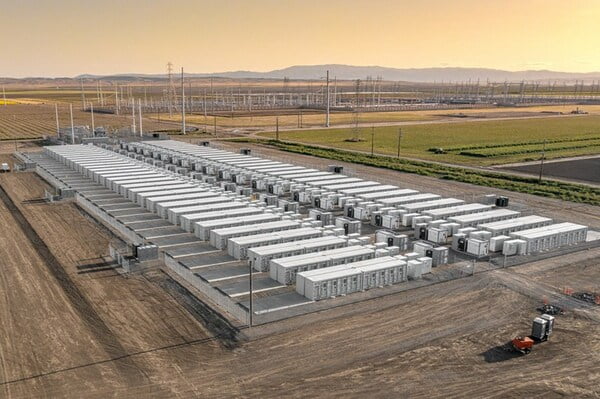
The goal of the CEC report was to provide policymakers and stakeholders with a greater understanding of the role and costs associated with long-duration storage facilities within the state of California.
The report came shortly before the California Public Utilities Commission (CPUC) revealed on Friday (19 July) it has determined that the state bodies should conduct a centralised procurement of some 2GW of LDES, both multi-day and 12-hour-plus, alongside 7.6GW of offshore wind and 1GW of geothermal, covered in a separate article here.
‘Significant progress’ towards state net-zero goals
The report acknowledged that California had already made “significant progress” towards its net-zero goals, with 50% of electricity coming from renewable sources in 2023 with 28% coming from solar sources.
With the move away from dispatchable fossil-fuel resources such as gas-fired peaking plants, battery storage facilities will become increasingly important by providing electricity to the grid during times of critical need such as cloudy days and during the nighttime.
California is leading the way in the US in terms of energy storage deployment and already has over 10GW of storage capacity connected to the California Independent System Operator (CAISO) grid, as reported by Energy.Storage-News in April earlier this year.
However, the majority of currently operational storage facilities are only able to discharge for up to a maximum of four hours, meaning they aren’t able to supply electricity from sunset to sunrise when it’s often needed most, leading to the motivation behind LDES facilities.
With the demand for long-duration batteries increasing, companies specialising in LDES have been cropping up over the past decade with bespoke solutions such as Hydrostor with its patented advanced compressed air energy storage (A-CAES) system, Energy Vault with its gravitational storage technology and Form Energy with its iron-air battery.
Key findings: 8-hour duration facilities to make up majority of storage projects
The CEC report concluded that storage facilities with a range and mixture of durations from four to 100 hours would be needed to support the California grid, but facilities with an 8-hour duration would likely make up the largest proportion of LDES facilities. However, this would be heavily dependent on the US$/kW cost of energy and efficiency of the projects.
The report found that facilities with an 8-hour duration and an efficiency greater than 80% would be competitive with 4-hour facilities with a higher 85% efficiency for only a slightly lower US$/kW cost.
However, it found that when the efficiency of 8-hour facilities dropped to 50%, the US$/kW cost would need to be roughly half that of 4-hour duration facilities with an 85% efficiency in order to remain competitive within the market.
When considered on a “per watt” basis, the US$/kW cost targets to enter the market for 100-hour duration facilities are similar to the 8-hour storage facilities (for example, a 50MW/100-hour must have a similar cost to a 50MW/80-hour facility). However, if the efficiency of the 100-hour facility dropped from 80% to 50%, a 40% lower US$/kW cost would be needed in order for it to remain competitive.
Daytime EV charging could reduce cost of needed storage by US$1 billion
With the sale of new petrol-powered cars and light-trucks set to be banned in California from 2035, the report analysed the additional storage needed for 15 million EVs, averaging 40 miles/day, which results in a total load of 55 trillion watt-hours per year (TWh/y).
The report looked at three distinct charging scenarios: nighttime charging where EVs commence charging at midnight, unconstrained charging where a spontaneous pattern occurs with peak demand during the evening and finally daytime charging which incorporates a main peak demand during the morning but also a secondary one at midnight.
With vehicles charging during the daytime when renewable generating facilities such as wind and solar would be available, the CEC found that the daytime scenario would require the least storage capability, corresponding to cost differences compared to the nighttime scenario up to US$1 billion.
The full CEC report with all its findings can be found here.
California Energy Commission investments in LDES
The CEC has already made investments in LDES technology, including issuing Form Energy a US$30 million grant for the development of a 5MW/500MWh storage project at a substation owned by public utility PG&E in Mendocino County, California.
Form Energy claims that its iron-air batteries work on the principle of reversible rusting, with electrical energy being stored through the rusting of iron which can then be discharged for up to 100 hours.
Washington-based utility Puget Sound Energy (PGE) has also signed a Memorandum of Understanding (MOU) with Form Energy for the deployment of an iron-air battery within its service territory, as reported in January 2024 by Energy.Storage-News. The pilot project is expected to have 10MW/1,000MWh of capacity and be online by the end of 2026.

